#poppyparker
Photo
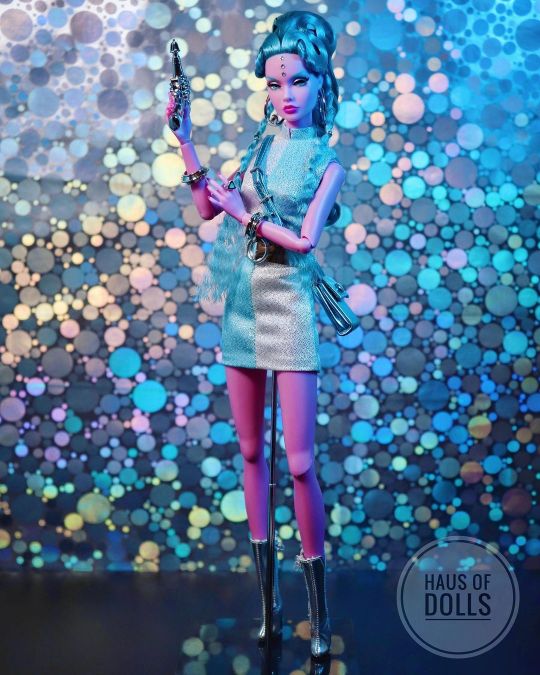
Galactic Poppy going where no doll has gone before! 🚀✨ #poppyparker #integritytoys #galaxygirlpoppyparker #staytuned #alien #dollcollector #ooakdoll #ooakpoppyparker #pink #fantasydoll #hausofdolls #retrodoll #spacedoll (at Sydney, Australia) https://www.instagram.com/p/CnJuliRrGoh/?igshid=NGJjMDIxMWI=
#poppyparker#integritytoys#galaxygirlpoppyparker#staytuned#alien#dollcollector#ooakdoll#ooakpoppyparker#pink#fantasydoll#hausofdolls#retrodoll#spacedoll
133 notes
·
View notes
Photo

Domingo é dia de... #teatromusicall com a best #RitaLee. Logo mais, #greaseomusical no #TeatroClaro, no #ShoppingVilaOlimpia. Última apresentação. Vem também!! #donatellafisherburg #poppyparker #integritytoysdoll #integritytoysdolls https://www.instagram.com/p/Cpa0RpDJqmn/?igshid=NGJjMDIxMWI=
#teatromusicall#ritalee#greaseomusical#teatroclaro#shoppingvilaolimpia#donatellafisherburg#poppyparker#integritytoysdoll#integritytoysdolls
2 notes
·
View notes
Photo

Cowboygirl boots are now available at the etsy store! 4 colos available! One size fit #barbie #barbieshoes #barbieboots #barbiebmr1959 #poppyparkerfashion #poppyparker #poppyparkerdoll #poppyparkerstyle #barbiestyle #dollboots #cowboyboots #cowgirlstyle #cowgirlboots #boots #dollgram #dollgallery #dollfotogallery #dollfotography https://www.instagram.com/p/CoCsbOxOGHS/?igshid=NGJjMDIxMWI=
#barbie#barbieshoes#barbieboots#barbiebmr1959#poppyparkerfashion#poppyparker#poppyparkerdoll#poppyparkerstyle#barbiestyle#dollboots#cowboyboots#cowgirlstyle#cowgirlboots#boots#dollgram#dollgallery#dollfotogallery#dollfotography
2 notes
·
View notes
Photo

This Nu Fantasy Korinne is gorgeous. It's so hard to pick up on camera how beautiful this doll is! I plan to post a reel to show her off. She is part of the Elements of Enchantment line. They are a coven of witches. I have 3 out of the 4 but now I wish I didn't pass on the first one! Ugh...so beautiful! . #integritytoysdoll #integritytoys #designerdolls #adultcollector #fashiondoll #fashiondolls #witches #coven #enchantment #poppyparker #mydolls #doll #dolls #magic #fashion #fashiondesign #designer #runway #fashionweek https://www.instagram.com/p/Cn92BZSJZ2C/?igshid=NGJjMDIxMWI=
#integritytoysdoll#integritytoys#designerdolls#adultcollector#fashiondoll#fashiondolls#witches#coven#enchantment#poppyparker#mydolls#doll#dolls#magic#fashion#fashiondesign#designer#runway#fashionweek
3 notes
·
View notes
Photo
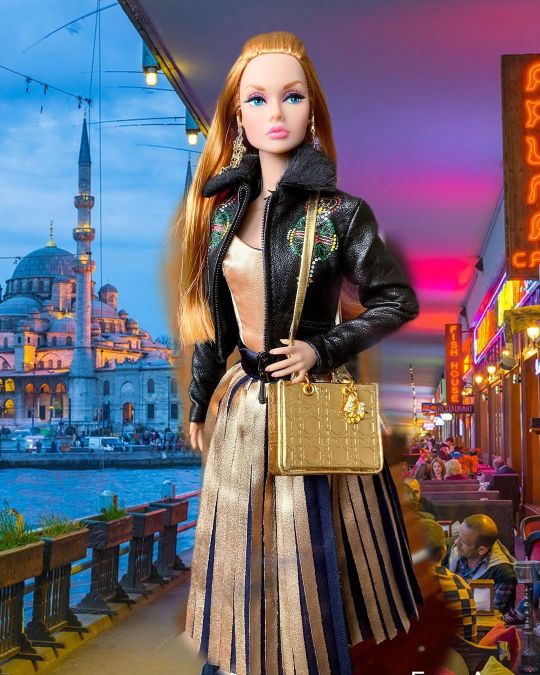
Beautiful girl in a beautiful city 💛🖤💛 VOTE for her - monthly contest open #dolls #dollphotogallery #fashionroyalty #poppyparker #fashion #fashionable #fashiondollsphotography #frdoll #instadoll #poppyparkerdolls #poppyparkercollector #integritydolls #dollphotogallery #awesome #beautiful #dollsfashion #cool #follow4follow #like4like #instaphoto #integritytoysdoll #integrity_toys #frdolls #wclub #playdolls ##playdolls #streetstyle #barbiestyle #barbie #barbiedoll #dollportrait (presso Instambul) https://www.instagram.com/p/Ck--w1hNDF5/?igshid=NGJjMDIxMWI=
#dolls#dollphotogallery#fashionroyalty#poppyparker#fashion#fashionable#fashiondollsphotography#frdoll#instadoll#poppyparkerdolls#poppyparkercollector#integritydolls#awesome#beautiful#dollsfashion#cool#follow4follow#like4like#instaphoto#integritytoysdoll#integrity_toys#frdolls#wclub#playdolls#streetstyle#barbiestyle#barbie#barbiedoll#dollportrait
2 notes
·
View notes
Photo

Walmart Exclusive Rainbow Vision COSTUME BALL Shadow High – Dolls Price: $34.97 Product details THE COSTUME BALL COMPETITION IS FIERCE. Right before the Rainbow Vision™ Semi-Finals Music Competition, the schools are all invited to a Costume Ball to have some fun and some friendly competition. But don’t be fooled, the Rainbow Vision™ Costume Ball is nearly as fierce as the Rainbow Vision Music competition itself. Which school are you rooting for? Rainbow High or its archrival Shadow High? COLLECT ALL 6 WALMART EXCLUSIVE: Collect all 6 Costume Ball dolls only at Walmart. Rainbow High™: Bella Parker™ pink witch themed, Robin Sterling™ light blue spider queen themed, Violet Willow™ purple kitty cat themed; Shadow High™: Lola Wilde™ pink were-cat themed, Eliza McFee™ light blue fairy themed, Demi Batista™ purple bat themed. ————————————————————- #rainbowhigh #rainbowhighdolls #doll #dolls #mga #mgaentertainment #dollcollector #fashion #laureldevious #hollydevious #collecttherainbow #fashiondoll #specialedition #bellaparker #jadehunter #sunnymadison #amayaraine #poppyparker #rubyanderson #instadoll #instagood #sherylmeyer #winter #violetwillow #skylerbradshaw #vilife #emivanda #halloween #rainbowvision #monsterhigh https://www.instagram.com/p/ChnI3P5u1LZ/?igshid=NGJjMDIxMWI=
#rainbowhigh#rainbowhighdolls#doll#dolls#mga#mgaentertainment#dollcollector#fashion#laureldevious#hollydevious#collecttherainbow#fashiondoll#specialedition#bellaparker#jadehunter#sunnymadison#amayaraine#poppyparker#rubyanderson#instadoll#instagood#sherylmeyer#winter#violetwillow#skylerbradshaw#vilife#emivanda#halloween#rainbowvision#monsterhigh
3 notes
·
View notes
Photo

#Bestnine 🌟🙏🏻🙌 se nos va el 2022! Y según Instagram estos post son mis #topnine2022 que mas gustaron 😊 grandes momentos y recuerdos! Esperando que este nuevo año venga cargado de bendiciones, salud y muchas muñecas 😉... un feliz año nuevo a todos ustedes!🤗 Gracias miles 🙏🏻 . . . . #Bestnine202200 #bestnineoninstagram #topnine #Instagram #worldofdolls #IntegrityToys #DollPhoto #DollPhotography #FashionDoll #PoppyParker #Dolls #Collector https://www.instagram.com/p/Cm1uS3dOBzW/?igshid=NGJjMDIxMWI=
#bestnine#topnine2022#bestnine202200#bestnineoninstagram#topnine#instagram#worldofdolls#integritytoys#dollphoto#dollphotography#fashiondoll#poppyparker#dolls#collector
0 notes
Photo
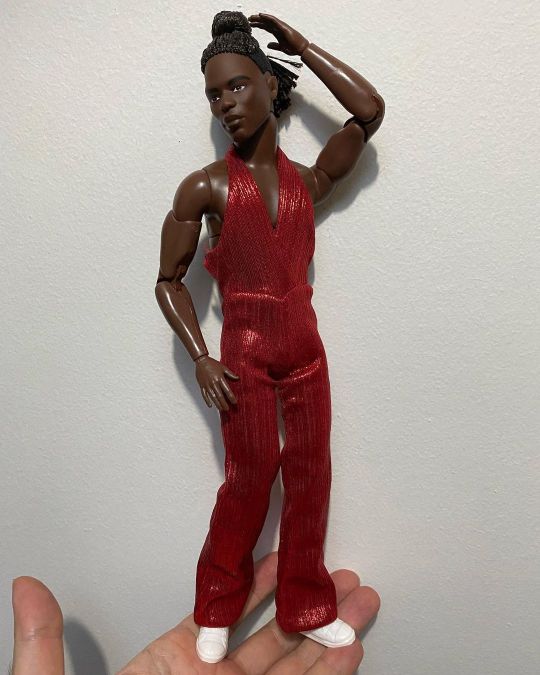
Timothée who? Jon is hitting the red carpet in a sequinned jumpsuit courtesy of #poppyparker and is so hot! #barbie #mattel #integritytoys #looks #barbielooks #model #jon #sequins #red #timotheechalamet #redcarpet #fashiondoll #fashiondolls #doll #dolls #dollstagram #dollcollector #dollphotography #dollphotogallery #dollcollection #dollsphotography #dudeswithdolls https://www.instagram.com/p/CiDWSlgM62F/?igshid=NGJjMDIxMWI=
#poppyparker#barbie#mattel#integritytoys#looks#barbielooks#model#jon#sequins#red#timotheechalamet#redcarpet#fashiondoll#fashiondolls#doll#dolls#dollstagram#dollcollector#dollphotography#dollphotogallery#dollcollection#dollsphotography#dudeswithdolls
0 notes
Video
Easter Egg Hunt in Orlando Park Ends With 5 Shot, 3 Dead from ProPics Canada Media Ltd on Vimeo.
ANOTHER MASS SHOOTING, NOW IN ORLANDO! #Orlando #Florida #massviolence #massshootings #guns #easteregghunt #News #violence #guncontrol #OrlandoFL #poppypark #nomoreshootings
0 notes
Photo

The ravishing Poppy Parker on the silver screen. #poppyparker #staytuned #integritytoys #blackandwhite #blackandwhitephotography #dollphotography #dollphotogallery #staytunedpoppyparker #vintage #silverscreenstars #hausofdolls (at Sydney, Australia) https://www.instagram.com/p/CpG-sqpvWff/?igshid=NGJjMDIxMWI=
#poppyparker#staytuned#integritytoys#blackandwhite#blackandwhitephotography#dollphotography#dollphotogallery#staytunedpoppyparker#vintage#silverscreenstars#hausofdolls
12 notes
·
View notes
Photo

Amigas normais?! Eu não tenho. Aqui a amizade é eterna e muito louca!! 🥰💞💓🎉 #donatellafisherburg #dynamitegirlsdoll #poppyparker #fraiburgo #barbieinstagram #barbieinsta #dollphotogallery (em Fraiburgo, Brazil) https://www.instagram.com/p/Cp3XiPepa54/?igshid=NGJjMDIxMWI=
#donatellafisherburg#dynamitegirlsdoll#poppyparker#fraiburgo#barbieinstagram#barbieinsta#dollphotogallery
1 note
·
View note
Photo

Way my cowboygirl collection is now live in the Etsy shop! Hurry quantity is limited! #cowboygirl #cowboybots #cowboyfashion #cowboy #dollsydollfashio #dollgallery #dollfotogallery #poppyparkerfashion #poppyparker #poppyparkerdoll #nufacefashion #integritydolls #integritytoys #integritytoysclothes #galery #summerfashion #summerlook #summerclothes #dollsydollshoes #dollsydoll https://www.instagram.com/p/CoBJtSSJgYT/?igshid=NGJjMDIxMWI=
#cowboygirl#cowboybots#cowboyfashion#cowboy#dollsydollfashio#dollgallery#dollfotogallery#poppyparkerfashion#poppyparker#poppyparkerdoll#nufacefashion#integritydolls#integritytoys#integritytoysclothes#galery#summerfashion#summerlook#summerclothes#dollsydollshoes#dollsydoll
0 notes
Text
The Tomb of the Unknown Warrior: between memory and myth of the war dead.
The tomb of the Unknown Warrior is the first monument that visitors to Westminster Abbey encounter, just inside the great west door. As they pause to read the inscription on the massive marble slab, many wonder about the man buried there over a hundred years ago and whether he was truly unknown. Lying in Westminster Abbey since 1920, the Tomb of the Unknown Warrior is not just a lone soldier from the war. The grave of the Unknown Warrior contains the remains of an unidentified British serviceman who was interred in 1920 as a way of honouring the fallen of the First World War. It is a National Act of Remembrance, representative of all those we lost in the Great War.

Such a commemoration to symbolise the fallen in every conflict then and since would not have come to pass but for a young military chaplain in the Anglican Church serving in France. However the selection of the Unknown Warrior was a secretive event and remains shrouded in mystery to this day. Even more interesting the role the Unknown Soldier played in how societies memoralise the war dead.
One of the longest-standing mysteries surrounding the Unknown Warrior is who came up with the idea. This confusion arose because the idea seems to have been conceived independently by both a Briton and a Frenchman in 1916. It seems clear now that the first to do so was David Railton, a young military chaplain educated at Keble College, Oxford and serving with the British Army on the Western Front in 1916. Railton had been conducting burial services for fallen soldiers in France.
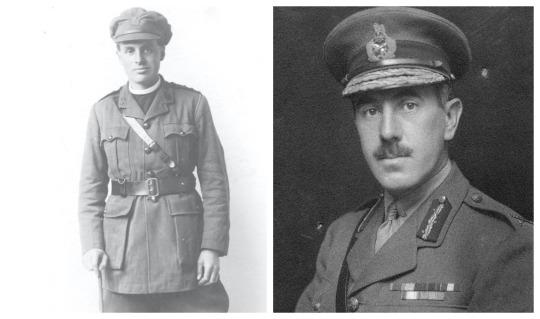
Revd David Railton and Brigadier-General Louis John Wyatt
As an experienced and mature man in his thirties he was appalled at the sufferings and loss caused by the War. He later tried to explain why he had felt it was so important to commemorate the individual in this way. He recalled an incident near Armentières where he came across a grave with a rough wooden cross inscribed "An unknown British soldier, of the Black Watch": He would write in 1931 “How that grave caused me to think!... But, who was he, and who were they [his folk]?... Was he just a laddie... . There was no answer to those questions, nor has there ever been yet. So I thought and thought and wrestled in thought. What can I do to ease the pain of father, mother, brother, sister, sweetheart, wife and friend? Quietly and gradually there came out of the mist of thought this answer clear and strong, "Let this body – this symbol of him – be carried reverently over the sea to his native land". And I was happy for about five or ten minutes”.
Just a few months later, in November 1916, Francois Simon, President of the Rennes Remembrance Society, proposed that the remains of an unidentified French soldier be interred in the Panthéon, the resting place of the great figures of French history. Because Railton initially kept the idea to himself, it was the French suggestion that entered circulation first.
This inspired a similar proposal by 'The Daily Express' in 1919, which was backed by the Comrades of the Great War Association. The idea was initially rejected by the British government, mainly on the basis that the Cenotaph had already by that time become established as Britain’s national war memorial.
The idea may never have gained acceptance had Railton not belatedly taken action in August 1920. He wrote to Herbert Ryle, the Dean of Westminster, with the suggestion that a body be returned from the Western Front for burial in the Abbey. The Dean was enthusiastic and wrote to the King, substituting ‘warrior’ for ‘comrade’.

Field Marshal Sir Henry Wilson writes to Herbert Ryle, Dean of Westminster informing him the Cabinet had approved the burial of the Unknown Warrior, 15 October 1920
The King was reluctant, thinking that the public would not welcome reopening the ‘war wound’ as he put it. But the Dean then wrote to the Prime Minister and senior military. Ryle succeeded in getting the Prime Minster, David Lloyd George, and the Chief of the Imperial General Staff, Field Marshal Sir Henry Wilson, to adopt the idea. These men in turn won over both the Cabinet and the initially reluctant King George V. Wilson told the former that 'no words could tell how proud we officers and men would be to have one of our simple soldiers buried in Westminster Abbey’.
In mid-October, a committee was hastily assembled to oversee the scheme. Plans were put in motion for a body to be returned from France for burial on Armistice Day (11 November), just three weeks later.
Despite the lack of time, everything would go to plan. The Unknown Warrior was buried with great solemnity as part a dual ceremony which also saw the unveiling of the newly rebuilt Cenotaph.
The French were already ahead of the British. After some debate over the appropriate location for their grave, the French finally chose the Arc de Triomphe over the Panthéon and made arrangements for a ceremony to take place the same day for their Unknown Soldier.
Another source of confusion was discovered within the minutes of the Memorial Services Committee, the body set up by the government to plan the scheme. These contain the revelation that the chosen body was to be that of a man who died in 1914. The reason for this was a request from the Abbey authorities that the body needed to be fully decomposed, presumably to avoid interring a rotting corpse.
If carried out, this plan meant that the Unknown Warrior would most likely be a soldier of Britain’s pre-war regular army, known as the ‘Old Contemptibles’ in mockery of an insult made by Kaiser William II. While the government did issue a statement informing the public of this decision, they also included the dubious and contradictory assertion that the Unknown Warrior could be from one of the Dominion forces or be an airman or a sailor of the Royal Naval Division.
Significantly, the detail that the chosen man was a soldier of 1914 has largely been forgotten. By contrast, the idea that he could be any one of the British Empire’s missing has become a well-established part of the mythology.
An analysis of the methodology employed by the men who undertook the selection suggests that the truth lies somewhere in between. The Unknown Warrior was most likely British and not from the Empire, but it also seems likely that that he could have died at any point in the war and so was by no means certain to be an ‘Old Contemptible’.
Many of the British personnel involved in the selection of the Unknown Warrior, 1920
The most contentious part of the Unknown Warrior’s story concerns the mysterious selection process. This was undertaken in great secrecy by Army units based in France and Belgium. It involved the exhumation of a number of unidentified bodies from cemeteries situated in various battle areas along the Western Front. These were taken to a makeshift chapel at the British Army’s headquarters at St Pol, near Arras, in northern France.
The commanding officer, Brigadier-General Louis John Wyatt, was instructed by the War Office about the Unknown Warrior’s burial. So the commanding officer, Brigadier General Louis Wyatt, made the final choice. No official record of how it was done was ever released, and so many different versions of this story have been told, and there are many long-standing disputes on points of detail.
The official story was that Wyatt ordered that the bodies of four unidentified British soldiers be brought to St. Pol-sur-Ternoise, one from each of the main French battlefields: Ypres, the Somme, Arras and Aisne. The exhumed bodies, each laid on a stretcher and covered with the Union Flag, were placed in a hut that served as a chapel for the garrison. At midnight on 8 November 1920 Wyatt, accompanied by a senior member of the Imperial War Graves Commission (later the Commonwealth War Graves Commission), went into the chapel and, with closed eyes, placed his hand on one of the bodies. This was the Unknown Warrior.

Revd. George Kendall (1882-1961)
But who chose the bodies? That would have been another army chaplain, Revd George Kendall, a Methodist minister who had been in France on the frontlines since 1915.
He was the army chaplain who had the task of finding the body, exhuming it with five others and bringing them back to St. Pol-sur-Ternoise, where one was chosen for a state funeral by Brigadier-general General Louis Wyatt. Although journalists pursued Kendall until his death in 1961, even his family never learned the truth, Revd George Kendall took the secret to his grave.
Born in 1881, George Kendall first became a steel worker at Thorncliffe in Yorkshire and then trained as a Primitive Methodist minister. In Windsor - where he befriended Queen Mary, who invited him to tea after he was spotted outside the castle preaching on the steps of Queen Victoria’s statue - when war broke out he volunteered to go to France as chaplain with the local regiment. He survived malaria in the Dardanelles and being gassed at the Somme, reported back to the Queen about meeting the Duke of Windsor sleeping on the floor of a billet in France, and eventually became a senior chaplain with the rank of major.
In Kendall’s autobiography, only discovered among his papers after his death and still unpublished, the chaplain wrote: “It has been stated that this is the greatest mystery of the first world war. I have been interviewed from time to time by the correspondents of nearly all our great national newspapers, asking me if I knew who he was, could I say where he was actually found, who was responsible for the idea? All I can say was that he was chosen from the countless unnamed dead in France and Flanders, that the nation might honour him, and this without distinction of rank, birth or service. Of course one might ask from what cemetery the bodies were selected! That I cannot answer, and the knowledge I have will die with me … The location can never be revealed, but again I stress this great fact – the soldier lying in Westminster Abbey is British and unknown. He may have come from some little village or some city in this land, and he may be the son of a working man or of a rich man, ‘Unknown to man, but known to God’.”
After 1918 Kendall took on the grim task of exhuming all the bodies buried where they fell in Belgium, from fields, ditches, and the ruins of buildings, and moving them to the new war grave cemeteries. The appalling work led to his taking up pipe smoking, to help counteract the smell as they dug up rotting bodies and picked through scraps of uniform for clues. He was, therefore, uniquely qualified when charged with finding, exhuming, and bringing to St Pol near Arras the bodies from whom the Unknown Warrior was chosen.

Soldiers exhuming a body on the Western Front, 1919
The most significant problem resulting from this secrecy was the persistent rumour in circulation during the inter-war period that the identity of the body was known in government circles. However, this is contradicted by the later accounts of the men involved, and the Unknown Warrior's anonymity is proven beyond dispute by one of the few surviving contemporary documents relating to the process.
A letter written by Colonel J Bradstock, an Army officer at St Pol at the time, to a colleague at the War Office. The letter concerns the inaccurate press speculation on the origins of the body, which Bradstock addresses by briefly outlining the selection method employed and giving his assurance that the body’s anonymity was preserved. He states: ‘You can say with absolute certainty that no one in this world knows where he came from.’

Officers involved in selecting the Unknown Warrior, including Captain Cecil Smith (second left), c1920
Kendall also put to bed some of these conspiracies as well as the romantic stories of the selection being made by a blindfolded officer in a darkened chapel. He wrote, “In all six bodies were finally taken to the headquarters at St Pol, near Arras. Those who awaited the bodies at St Pol did not even know from where they had come,” he wrote. “The six coffins were placed in a hut, and each covered with a Union Jack. All night they rested on trestles, with nothing to distinguish one from the other. The door of the hut was locked, and sentries were posted outside. In the morning a general (Brigadier Wyatt) entered the hut. He placed his hand on one of the flag-shrouded coffins, and the body therein became ‘The Unknown Warrior’.”
One curious inaccuracy that crept into the story concerns the dates on which the selection took place. For many years, the dates of 7-8 November 1920 were used, as these had appeared in the most authoritative known account, which had been written by Wyatt for 'The Daily Telegraph' in November 1939.
This was challenged by Andrew Richards in his book 'The Flag: The Story of Revd David Railton and the Tomb of the Unknown Warrior'. Richards noticed that these dates did not square with what was known about the rest of the Unknown Warrior’s journey from St Pol to London.
The correct dates of 8-9 November have now been found on an earlier hand-written account by Wyatt kept at the Imperial War Museum in London, and have been corroborated by several other sources. These include a memoir held in the archive of the National Army Museum, written by Vere Brodie, who was serving at St Pol with Queen Mary’s Army Auxiliary Corps. Brodie did not witness the selection first-hand, but noted the dates and the timings of events, which accord with Wyatt’s earlier account.

The Unknown Warrior prior to embarkation at Boulogne, 1920
The longest-standing question surrounding the selection process concerns the number of bodies involved. Wyatt’s figure of four bodies conflicts with other accounts, notably as we’ve seen with that of Senior Chaplain George Kendall, who stated that six were involved. Other plausible figures are three and five. This issue cannot be settled beyond dispute.
However, four remains the most likely figure, as it is backed up by two further important sources from participants: an account written by Major General Cecil Smith in 1978, and a set of secret orders issued to Captain Albert Fisher of 14 Graves Registration Unit on 6 November 1920. Significantly, while these sources are all in accord on this point, they diverge on what has become the most intriguing issue of all, the final resting place of the bodies which were not chosen.
Wyatt’s accounts state that the unselected bodies were buried in St Pol cemetery. This was first challenged by Smith, who wrote how he had been part of a team tasked with reburying them. He described how the original plan to bury them in St Pol was dropped because the appearance of three new graves there would have made it obvious that these were the men who had been involved in the selection, and this would have been detrimental to the secrecy surrounding the process.
Instead, Smith described how his team reburied them 50 miles away along the Albert-Bapaume road. It was their hope that these graves would be discovered by body search parties working in that area and would then be reburied, completely anonymously, elsewhere.
Smith also related how he later checked the burial records, which stated that three bodies from that area had indeed been discovered and reburied, although it is not known where. Smith’s version was seemingly confirmed by the grave records of St Pol cemetery, which showed that the last burial to have taken place there was in July 1920.
However, Smith’s version has now itself been challenged by the secret orders that were issued to Captain Fisher. These state that the three remaining bodies were to be interred in Cagnicourt cemetery. As these orders are a contemporary document, written just two days before the selection was made, they carry significant weight.
However, while records also show that Fisher and his team were working in Cagnicourt around that time, an analysis of the graves there has found none that match these bodies. This leaves Smith’s account as the most plausible, though there remains plenty of scope for doubt.
So, while some of the questions surrounding him can be settled satisfactorily, it would seem that the Unknown Warrior is not yet ready to yield all of his secrets.

What is not in dispute is what happened after. That has been well documented and even photographed for posterity. The chosen coffin travelled the following day, under ceremonial military escort, 90 miles away to the port of Boulogne.
The Unknown Warrior arrived in Boulogne at 3.30pm on 9 November and was received by representatives of the British Army, the French Army and the French government at the Chateau Boulogne where the coffin was placed in the library that had been turned into a temporary chapel.
A special casket had been sent from England, made from solid oak from a tree in Hampton Court Palace garden, banded with iron and with iron hooped handles.
The following day, 10 November, the coffin – covered with the union flag (now known as the ‘Padre’s flag’) that David Railton himself had used on improvised altars and to cover the bodies of soldiers killed in the war – was taken to the quayside in a mile-long ceremonial procession through the streets of Boulogne, led by French schoolchildren and escorted by a division of French troops, while all the bells of Boulogne tolled. Massed crowds watched silently as the cortege passed by.
The British destroyer, HMS Verdun, was moored at the Boulogne quayside. With due ceremonial, the Unknown Warrior was taken aboard by the military bearer party. The ship cast off with an Able Seaman standing at each corner of the coffin.
Six destroyers of the Royal Navy Atlantic Fleet were waiting at sea to provide a naval escort – three abreast forward and three astern – on the short journey across the English Channel.

The arrival of the Unknown Warrior at Dover, Kent.
The Unknown Warrior arrived at Admiralty Pier, Dover to an honorary 19-gun salute fired from Dover Castle. The cortege, accompanied by officers representing all units of the Dover garrison, along with the Lord Mayor and Corporation of Dover, then proceeded along a route lined with troops, heads bowed and rifles reversed as a mark of respect, to the special train that would convey the coffin to London.
On 10 November at 5.50pm the Unknown Warrior began the three hour journey to Victoria station.
At Victoria station, a large crowd waited behind barriers as the Unknown Warrior arrived to a guard of honour from the Grenadier Guards. The silence was deep and profound. Men and women wept.
The Unknown Warrior remained overnight at the station in the funeral carriage until interment at Westminster Abbey the following day, 11 November.
The gun carriage, drawn by six black horses of the Royal Horse Artillery, travelled between lines of troops – heads bowed and rifles reversed – on the short journey from Victoria station.
Thousands came to pay their respects, many in tears. As Big Ben chimed 11 o’clock, the Cenotaph was unveiled as the flags fell away and a two-minute silence across the land began, before the haunting notes of the Last Post rang out.
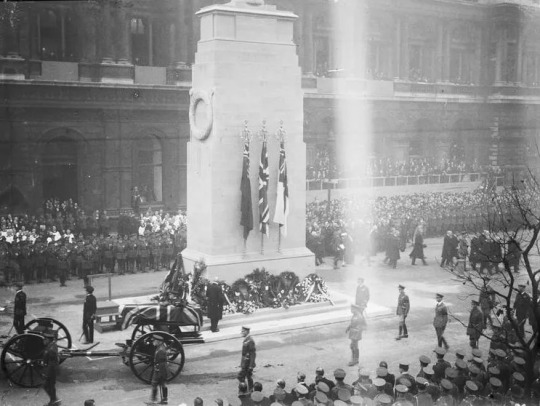
King George V (seen centre bottom) follows the Unknown Warrior’s gun carriage as it makes its way down Whitehall to Westminster Abbey after the unveiling of the Cenotaph.
The Cenotaph – commemorating the 1.1 million British and Empire dead of the First World War – was a hugely symbolic national shrine. There had been an earlier temporary one, made of wood, plaster and painted canvas, designed by the architect Edwin Lutyens for the 19 July 1919 peace parade.
This first Cenotaph immediately caught the public imagination, becoming a powerful focus for the grief of a nation whose dead lay in war graves overseas. Over 1.25 million people visited in the first week, leaving flowers in huge numbers.
Lutyens’ second Cenotaph, in Portland stone and virtually identical, was erected in time to be unveiled by the King, before the burial of the Unknown Soldier in Westminster Abbey.
The iron shield reads: ‘A British Warrior who fell in the Great War 1914-1918 for King and Country.’ The medieval crusader’s sword was selected from the Tower of London Collection.

The body of an unidentified British soldier was buried in Westminster Abbey on 11 November 1920.
Symbolic of all the dead of the First World War (1914-1918), the soldier was buried in a solemn and profoundly moving ceremony two years to the day after the signing of the Armistice that ended the war with Germany.
King George V led the national mourning, along with members of the British royal family. Among the 1,000-strong congregation was the Prime Minister, David Lloyd George, leading politicians and senior members of the British military.

Present at the burial ceremony were leading politicians, senior military figures and members of the Royal Family led by King George V. The artist Frank O. Salisbury attended the burial and made a sketch of the event. He used the sketch as the basis for this large painting, which hangs in Committee Room 10 in the Houses of Parliament.
The pallbearers included the First World War chiefs of the three Armed Forces – Field Marshall Douglas Haig, Admiral Lord David Beatty and Air Chief Marshal Sir Hugh Trenchard.
The guard of honour comprised 96 men decorated for bravery, including 74 holders of the Victoria Cross from the three services. The guests of honour were some hundred British widows who had each lost their husband and all their sons during the war.
The Cathedral Choir, singing hymns, met the coffin which was then borne up the nave through the congregation, while the choir sang the words from the Burial Service.

Four members of the Armed Forces stand watch at each corner of the Unknown Warrior’s grave following the burial as thousands of mourners filed past.
After the Unknown Warrior was lowered into the grave, the King scattered French soil on the coffin from a silver shell. A roll of drums reverberated round the Abbey, fading into silence until the bugle notes of Reveille.
The grave was later filled with earth from the First World War battlefields of France and temporarily sealed with a stone inscribed: ‘A British Warrior who fell in the Great War 1914-1918 for King and Country. Greater love hath no man than this.’
Armistice Day, with its two minutes’ silence, was commemorated nationally every year on the 11th hour of the 11th day of the 11th month until the outbreak of the Second World War (1939-1945), after which it was officially replaced with Remembrance Sunday.

The grave, permanently capped with a stone of Belgium black marble, was unveiled at a special service at Westminster Abbey on Armistice Day, 11 November 1921, exactly one year after the burial of the Unknown Warrior.
The Cambridge educated Yale historian Jay Winter has written a lot about how war commemorations like the Tomb of the Unknown Soldier can be viewed as an existential response to universal loss. As a student at Cambridge I remember listening to one of his talks on how we memorialise the war dead and it had added poignancy for me as I had already toying with the idea of joining the British Army as an officer. Back then but more so now as a veteran of the Afghan war I have thought deeply about the complexity around how war and society relate to one another.
Millions of people died as a result of the First World War, creating an “insurmountable” void in the communities of the countries that fought in the conflict. It was necessary for society, earlier moved by a belief in the nation’s prosperity, to once again be given hope and compensation. Thus, the political preparation of the mourning required, over the course of several years, a profound material investment and the definition of new symbolic codes – a set of forms capable of bringing together multiple and diverse experiences that touched every French home, both rich and poor. War was the great leveller. War was now ingrained and even stained within the culture.
For want of a better term, ‘War culture’ in my view has enabled the assimilation of the mortal brutality of the conflict by means of its abstraction and generalisation, owing to the multiple dimensions of the conflict and its subsequent remembrance. Why societies memoralise the war dead was in effect an effort to cancel the destabilising impact of mass deaths on public opinion, neutralising it in new environmental and architectural structures incorporating local traditions, and even offering a new lexicon for how we view death.
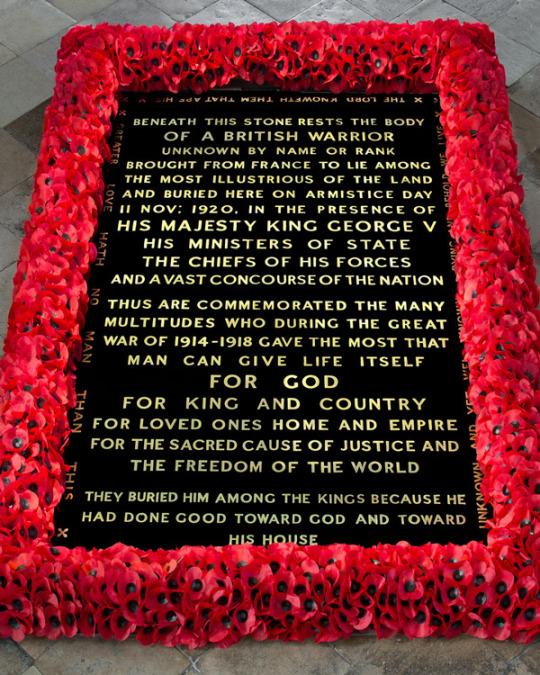
What do I mean? Listen closely to how we talk about war. One does not die in war but rather falls on the battlefield, life is not lost but is given, the individual does not disappear into nothingness but lives eternally in the realm of patriotic heroism. This so-called ‘War culture’ prevented consternation as it did back in the aftermath of the trauma of the First World War over the unjustified mass sacrifice and individual mourning; the ritual of the cult of the dead morphed into a consensual pride in death on behalf of the homeland as we got into the 1940s and beyond. One doesn’t have to have Christian sensibilities to also see the paradoxical intention was to transform physical death in a religious, political and ideological sense in order to enhance its value. For instance the overwhelming theme of art of the First World War through the metaphor of crucifixion is clearly present.
The extreme difficulty in dealing with mourning and death in societies in the interwar period resulted in the planning of memorial phenomena that allowed the living to experience mourning collectively, lightening the burden of death. Here for instance the “myth of the lost generation” was created, used both by the German far right as well as by the English upper classes in the context of the postwar crisis. Memorials served a ritualised means of disseminating death, transforming soldiers who had perished into heroes of national salvation: This heightened value of the First World War dead clung to a heroic and sanctifying dimension of their disappearance, rooted in this war culture resulting from the conflict, which transformed the dead into voluntary sacrifices in a great crusade. The discourse of the hero-fiction of the common soldier who ‘happily’ sacrificed his life to defend the homeland, became an integral part of the myth of the war experience. A construction that perforce incorporated a necessary transcendence of death, creating alternatives for a catharsis, based on themes from classical antiquity and, even more so, from Christianity, i.e. the belief in the resurrection of men. This was the symbolic discourse present from the immediate cult of the dead to the monumentalisation of the sites that became focal points for a “new” civil religion as we got into the 1930s.

The idea of a national hero thus implied the idea of a nation as a space that recognised a national hero. The role of a hero was intertwined with national identity and the political use of memory, revealing founding values. In this formulation, the hero worked as the ‘guarantee’ of the salvation of the national destiny and the required messiah for faith in the future. In a secularised republic, like Republican France, where the hierarchies of religious homage had disappeared, the secular nation became a substitute for God or the king, changing the logic of political legitimisation. The values of Christianity, just like the idea of voluntary sacrifice for greater good, were, in this context, subject to a re-appropriation by the French state. Common men are sacred heroes and are transferred to the national pantheon, conceived horizontally. Religion provided the guidelines of the new civic liturgy. In France there was huge political charged debates as to where to put the tomb of the Unknown Soldier; some wanted to put it in the Pantheon alongside the other Great Men of France but others argued the Unknown Soldier should not be defiled by putting in the same place as either a Zola or a Voltaire. What was needed was a bigger stage to make a point and hence the Arc de Triomphe was chosen.
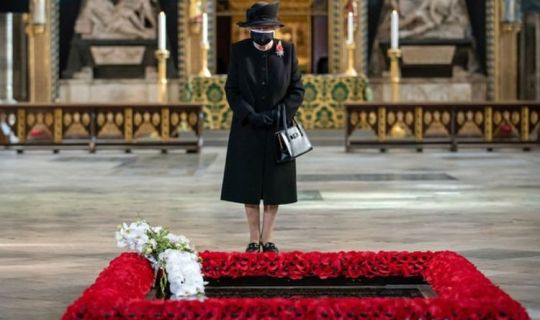
By going beyond individual mourning, through a collective consolation of glorification and the cancellation of death, reverence for the dead emerged as a key focal point in the nations that participated in the Great War. In effect The Unknown Soldier concentrated the patriotic and ethical value of the nation and enabled its political action. And, above all else, the idea of the Unknown Soldier responded perfectly to the impersonal mass dimension of the national sacrifice.
Neither the notion of an empty tomb nor that of the unknown soldier were hallmarks solely of the First World War, but they became widespread due to this conflict. One by one many other countries started to build their own memorials to the war dead. First in London and Paris, on November 11, 1920; in 1921, in Washington, Rome and Brussels; in 1922, in Prague, Belgrade, and then Warsaw and Athens.
#unknown soldier#westminster abbey#first world war#world war one#war#soldiers#battle#memorial#tomb#britain#british army#history#remembrance sunday#poppyparker#lest we forget
21 notes
·
View notes
Photo

A ray of natural sunset 🌅 ! I wouldn’t correct that ! I am gonna leave it … this is our 6 Nominee for our monthly contest Miss Kay 😎 #dolls #dollphotogallery #fashionroyalty #poppyparker #fashion #fashionable #kickypoppyparker #fashiondollsphotography #frdoll #instadoll #poppyparkerdolls #poppyparkercollector #integritydolls#dollphotogallery #awesome #beautiful #dollsfashion #cool #follow4follow #like4like #instaphoto #powerlike #integritytoysdoll #integrity_toys #frdolls #wclub #playdolls #integrity_toys #itdollls #poppyparkerdolls #poppyparkercollector (presso Verona, Italy) https://www.instagram.com/p/Cki4-V7IpNP/?igshid=NGJjMDIxMWI=
#dolls#dollphotogallery#fashionroyalty#poppyparker#fashion#fashionable#kickypoppyparker#fashiondollsphotography#frdoll#instadoll#poppyparkerdolls#poppyparkercollector#integritydolls#awesome#beautiful#dollsfashion#cool#follow4follow#like4like#instaphoto#powerlike#integritytoysdoll#integrity_toys#frdolls#wclub#playdolls#itdollls
2 notes
·
View notes
Photo

Walmart Exclusive Rainbow Vision COSTUME BALL Shadow High – Eliza McFee Price: $34.97 THE COSTUME BALL COMPETITION IS FIERCE. Right before the Rainbow Vision™ Semi-Finals Music Competition, the schools are all invited to a Costume Ball to have some fun and some friendly competition. But don’t be fooled, the Rainbow Vision™ Costume Ball is nearly as fierce as the Rainbow Vision Music competition itself. Which school are you rooting for? Rainbow High or its archrival Shadow High? FAIRY COSTUME THEMED: Eliza McFee™ can't wait to show off her magical skills at the Rainbow Vision™ Costume Ball. She is such a special effects pro that you’d think her fairy wings were real. And she paired them with the perfect light blue dress covered with delicate blue flowers. GORGEOUS FEATURES: Eliza McFee is dressed in LIGHT BLUE from head to toe. She has gorgeous, detailed features in her fashion, beautiful long light blue shimmery hair with a crown braid and bangs, long nails, long eye lashes and glass eyes. Collect all the gorgeous Rainbow High & Shadow High Costume Ball themed fashion dolls. TRENDSETTER FASHIONS: Eliza wearing a light blue tulle dress with silver glitter, satin lining and beautiful die cut florals in chiffon with beads. And her dress is embroidered with black thread iridescent organza that says “Shadow High School” in french. Heels with molded bows. Teardrop earrings with faux diamonds and pearls. Product details COLLECT ALL 6 WALMART EXCLUSIVE: Collect all 6 Costume Ball dolls only at Walmart. Rainbow High™: Bella Parker™ pink witch themed, Robin Sterling™ light blue spider queen themed, Violet Willow™ purple kitty cat themed; Shadow High™: Lola Wilde™ pink were-cat themed, Eliza McFee™ light blue fairy themed, Demi Batista™ purple bat themed. ————————————————————- #rainbowhigh #rainbowhighdolls #doll #dolls #mga #mgaentertainment #dollcollector #fashion #laureldevious #hollydevious #collecttherainbow #fashiondoll #specialedition #bellaparker #jadehunter #sunnymadison #amayaraine #poppyparker #rubyanderson #instadoll #instagood #sherylmeyer #winter #violetwillow #skylerbradshaw #vilife #emivanda #halloween #rainbowvision #monsterhigh https://www.instagram.com/p/ChnJ1ltO0sd/?igshid=NGJjMDIxMWI=
#rainbowhigh#rainbowhighdolls#doll#dolls#mga#mgaentertainment#dollcollector#fashion#laureldevious#hollydevious#collecttherainbow#fashiondoll#specialedition#bellaparker#jadehunter#sunnymadison#amayaraine#poppyparker#rubyanderson#instadoll#instagood#sherylmeyer#winter#violetwillow#skylerbradshaw#vilife#emivanda#halloween#rainbowvision#monsterhigh
3 notes
·
View notes
Photo

😎 #PoppyParker #IntegrityToys gritytoys https://www.instagram.com/p/CZHurvJJ7iJ/?utm_medium=tumblr
2 notes
·
View notes